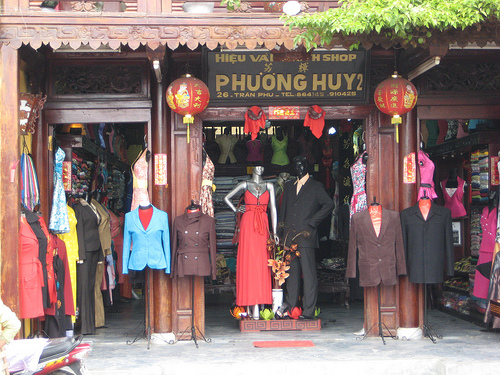 Freddy Dico is the co-founder of Sir New York, a modern menswear label that launched in Spring 2010. He’s from Macau, but grew up in San Francisco. And before getting into the world of design, he was actually a star student in the biochemistry program at U.C. Davis. Since switching gears and graduating from FIT in New York, Freddy has worked with companies like Polo Ralph Lauren, J. Crew, and Brooklyn Industries, and designed an entire line for mass-market men’s label Scappino in Mexico. You can check out his latest work here.
Freddy Dico is the co-founder of Sir New York, a modern menswear label that launched in Spring 2010. He’s from Macau, but grew up in San Francisco. And before getting into the world of design, he was actually a star student in the biochemistry program at U.C. Davis. Since switching gears and graduating from FIT in New York, Freddy has worked with companies like Polo Ralph Lauren, J. Crew, and Brooklyn Industries, and designed an entire line for mass-market men’s label Scappino in Mexico. You can check out his latest work here.
TILE: Being a designer involves much more than a creative vision and talent with scissors and thread. What are some of the costs of starting your own fashion label?
Freddy: Since we are a really small start-up with practically no capital, time is the #1 cost.
To start, you need a product, which means sourcing fabrics, making patterns, sewing/fitting, creating labels, etc. Once the product is perfected, you need to document and promote it through a website, lookbooks, business cards, fashion presentations, models, invites, etc. The lists really goes on and on and on… Luckily, I have a partner (Auston Bjorkman) who is equally well-rounded in many areas, so we try to personally execute most tasks to lower our costs.
Of course there are only 24 hours in a day, which means you can’t do it all. We’re fortunate enough to have many people who believe in us and who are willing to volunteer their time and effort.
Oh, and let’s not forget about getting a business license and all that legal stuff…
TILE: How does a piece get from the designer’s head to the runway?
Freddy: At the start of the season, Auston and I will brainstorm and finalize the themes/concepts we want to use. Then we create sketches, source fabrics, make patterns, and sew the samples. After that we set up a photoshoot, cast models, send invites, create a website, scout locations for the show, and stress ourselves out making sure the event goes off without a hitch.
TILE: And how does that piece get from the runway to the retail store?
Freddy: There’s a lot of following up on our part. Before your runway show, you need to figure out pricing and where will you produce the garments. Once you have all the business details – the linesheets – figured out, you’re ready to potentially attract buyers to place your product in their stores. Once orders are confirmed, you actually need to produce and ship the pieces to them.
TILE: How can you be a “smart shopper” when it comes to designer clothing?
Freddy: Well, the answer to that question depends on what kind of person I’m talking to. But in general, I always believe that the value of a garment is based on the number of times worn. So make sure you love it!
TILE: What advice would you give to your teenage self?
Freddy: Enjoy the ride!
